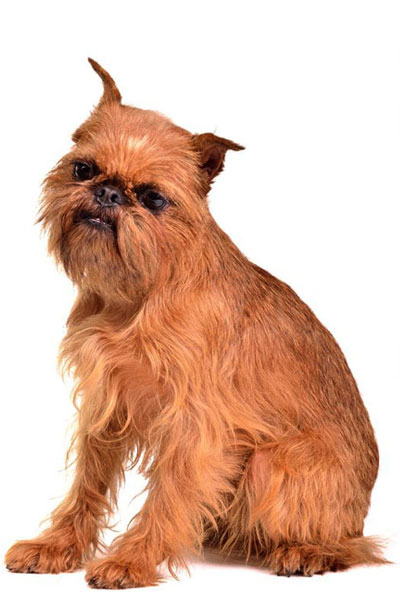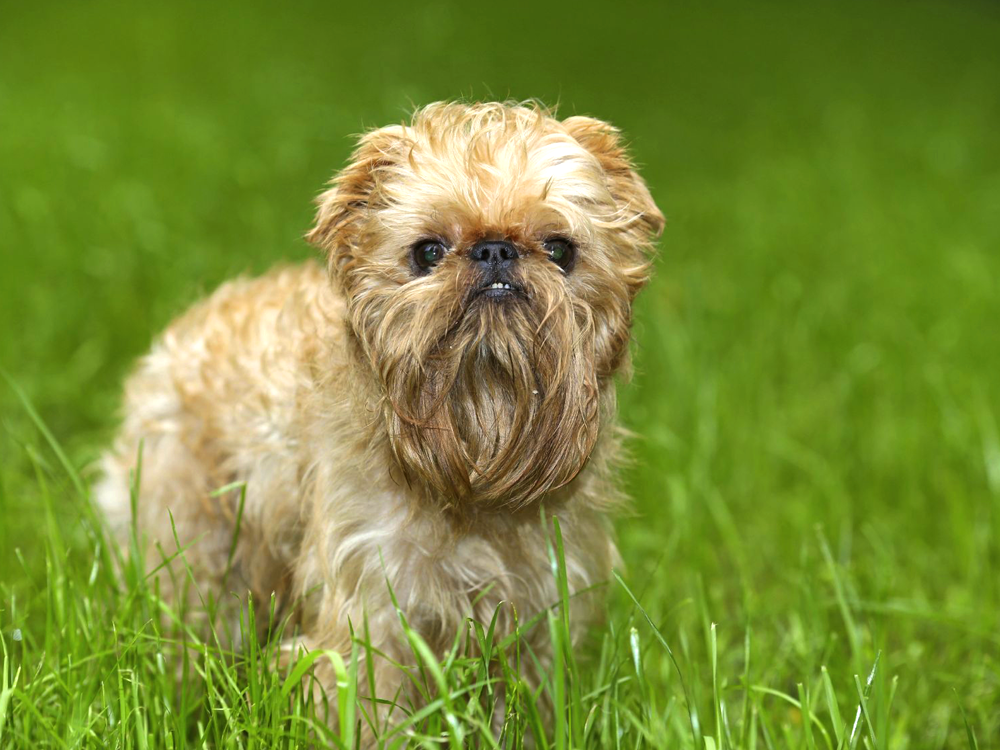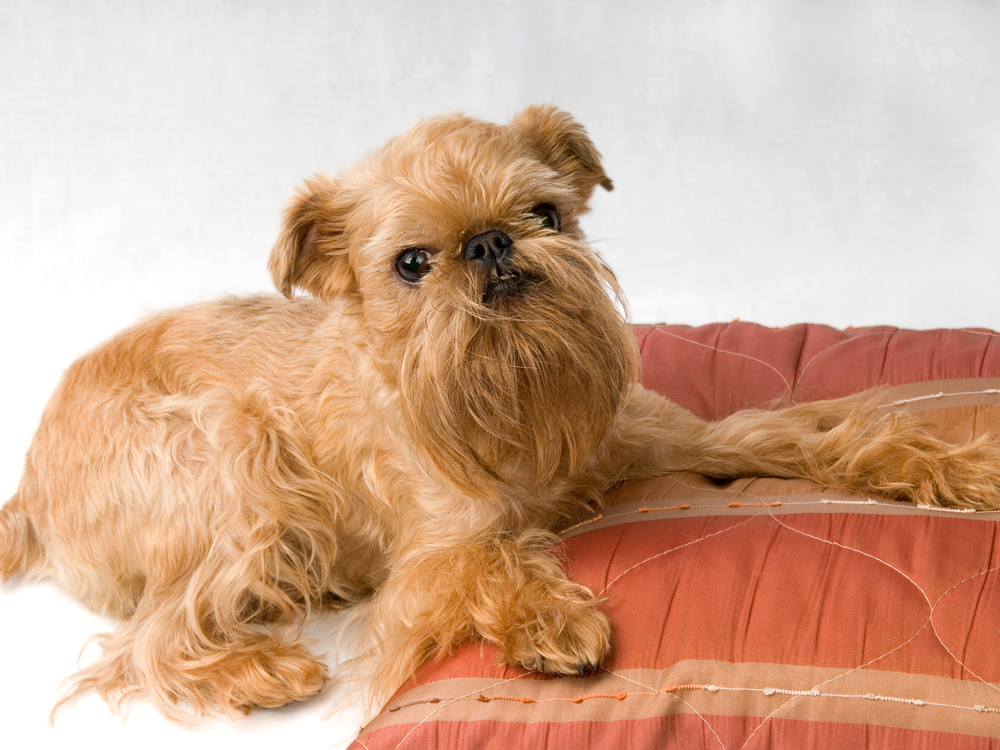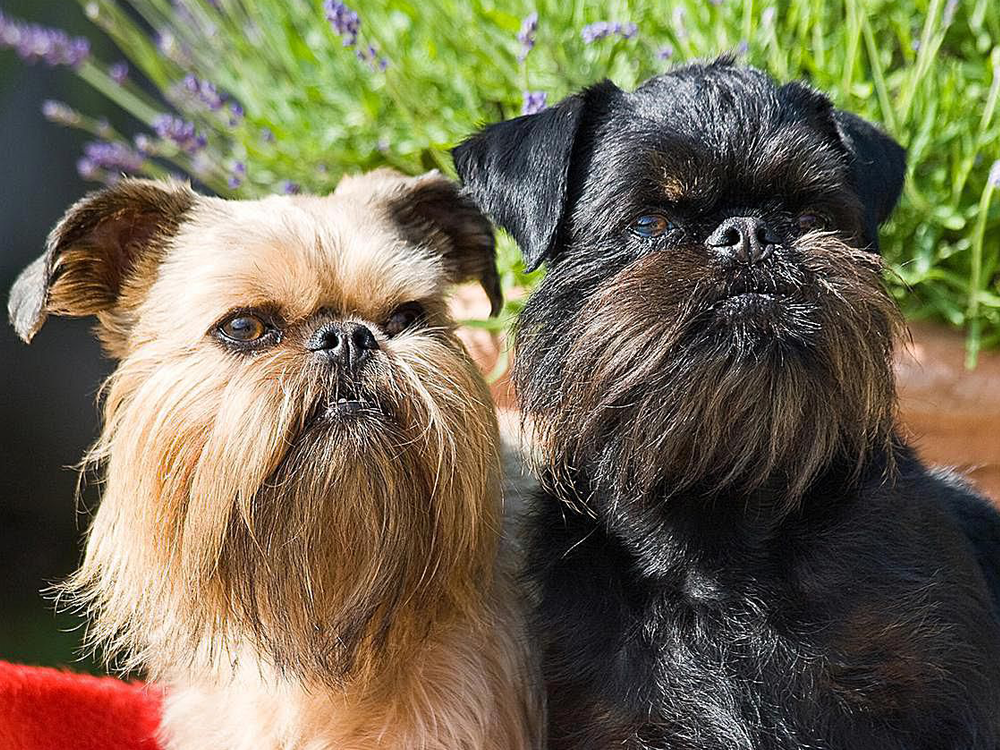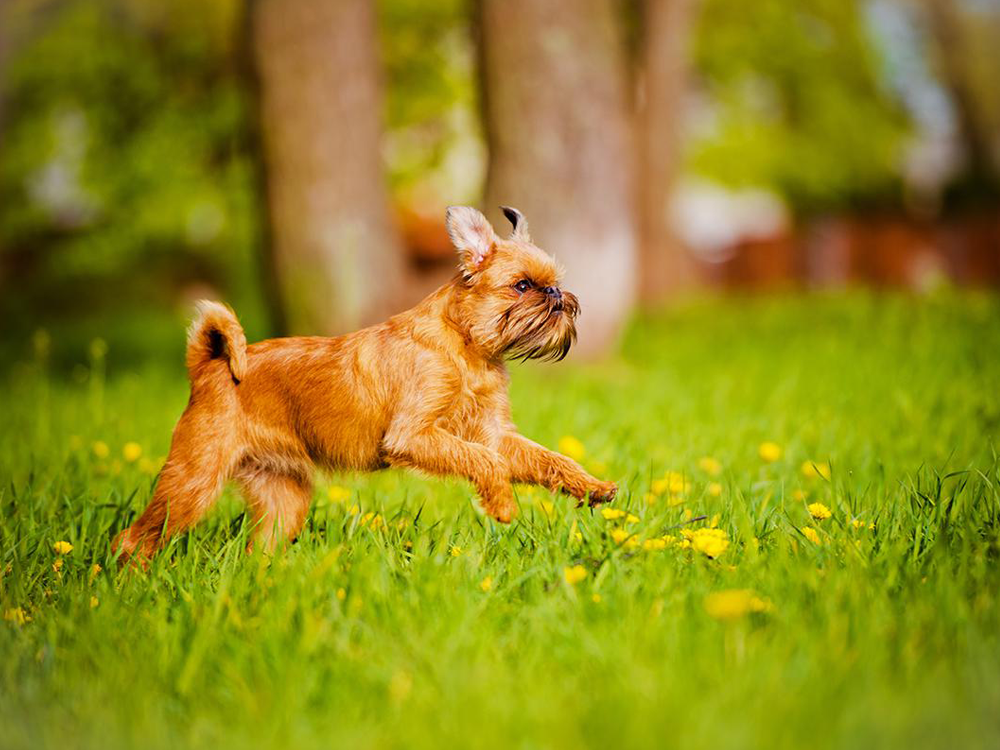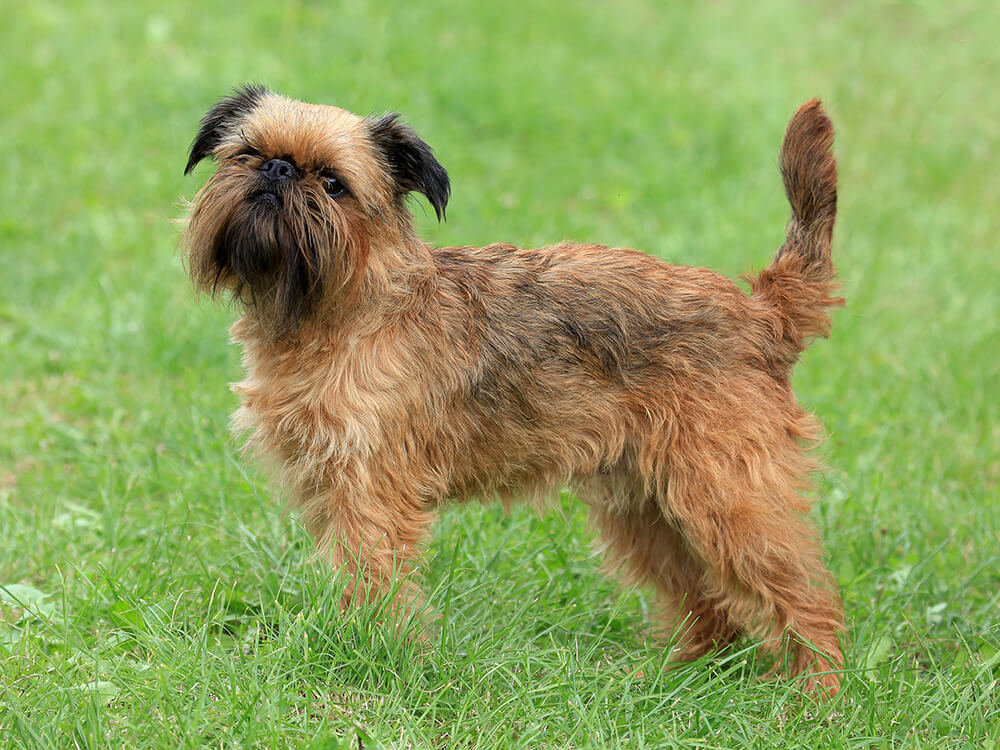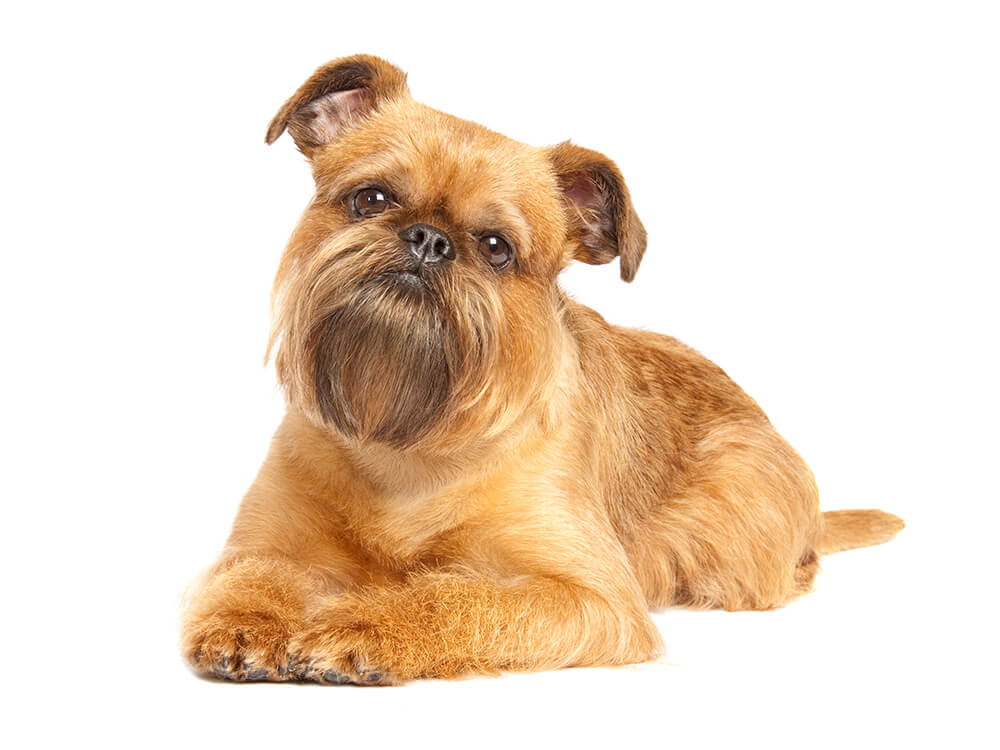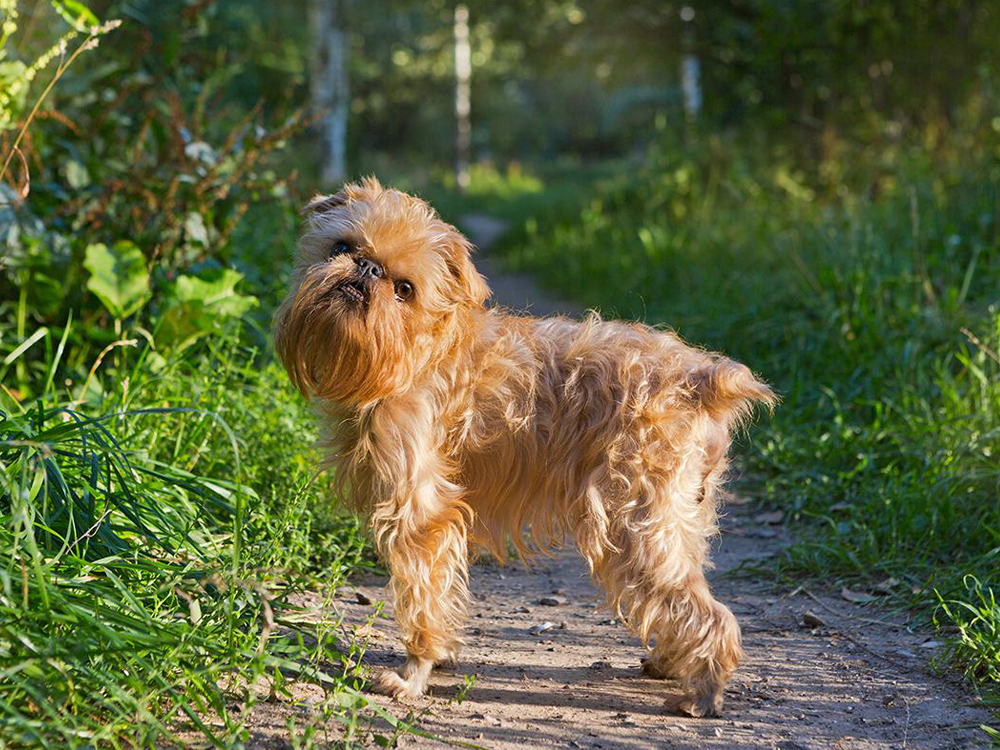
Griffon Bruxellois Breed Pictures
Vital Breed Stats
| Height: | 18 - 20 cm M | 18 - 20 cm F |
| Weight: | 3 - 6 kg M | 3 - 6 kg F |
| Breed Group: | Pastoral Dog Group |
| Life Expectancy: | 13 - 15 years |
| KC Registered: | No |
Breed Characteristics
| Size: |  |
| Grooming: |  |
| Exercise Level: |  |
| Trainability: |  |
| Barking Level: |  |
| Good with Children: |  |
| Good with other pets: |  |
| Affectionate: |  |
| Protective: |  |
| Cost to Keep: |  |
Give a thumbs up if you love the Griffon Bruxellois

0
More About the Breed
History
There are three variations of this dog breed namely, the Griffon Bruxellois (Brussels Griffon), Griffon Belge (Belgian Griffon), and Petit Brabancon. All three are said to have descended from an ancient dog breed called Smousje, which is a small terrier-like dog with a rough coat bred to hunt and eliminate rodents. The Griffon Bruxellois was depicted in a 15th century Jan van Eyck painting, showing a little-wirehaired dog in the background of The Arnolfini Marriageis, which is thought to be an earlier version of the breed.
It was originally bred only as a stable dog to look after horses and hansom cabs in the late 1800s. However, in the 19th century, Belgium coachmen bred the Griffon Bruxellois with imported toy dog breeds such as the Pug, the King Charles Spaniel and also Affenpinscher to develop a breed that does not only guard but also get rid of stable vermin. The Griffon Bruxellois was known as a "Belgian Street Urchin" as it was a renowned street dog because of its intelligence and toughness.
In 1883, the first Griffon Bruxellois was registered in Belgium's Kennel Club Studbook and the breed's popularity increased when it caught the interest of Queen Marie Henriette, who was a dog enthusiast. This catapulted the popularity of the Griffon Bruxellois in the international scene, and many of these dogs were exported to other countries including England in 1897 and the US in 1945.
However, the number of Griffon Bruxellois declined during the First and the Second World Wars. After the Second World War, there were only a few native Griffon Bruxellois left in Belgium but thanks to some dedicated breed enthusiasts in the UK, the breed survived extinction. Today, many Griffon Bruxellois dogs are favoured family pets because of their affectionate nature and charming looks.
Appearance
The Griffon Bruxellois is a small dog with a sturdy build, weighing 7 to 12 pounds and standing 18 to 20 centimetres at the withers. It has a square proportion, with its length matching its height. It has a domed-shaped head, short nose with large nostrils and huge shiny eyes that are set wide apart, and naturally adorned with long black lashes. Its eyes are also its distinct and memorable feature that gives it an almost-human expression. The Griffon Bruxellois has small ears set high above the head and can either be cropped or not. It has medium-length well-muscled forelegs, arched neck and level back that add to its robust appearance.
The Griffon Bruxellois wears either a rough and wiry dense coat or a straight, smooth and glossy coat. It often comes in a variety of colours including red, reddish-brown, beige, black and tan, and solid black.
Grooming
Grooming-wise, whether it's low or high maintenance will largely depend on the type of coat. For a rough-coated Griffon Bruxellois will require several brushings per week, including hand stripping every three months, while the smooth-coated Griffon will only require at least once a week of brushing. However, both coat types do not shed much but can't be considered as hypoallergenic. Bathing for both should be done as needed.
Since the Griffon Bruxellois is a small dog breed, it is prone to gum diseases and as such should have its teeth brushed and cleaned on a regular basis. Also, trim its nails once or twice a month to keep its nails in excellent condition and avoid overgrowth, cracking and splitting. Ears should also be cleaned regularly to prevent ear infections. During grooming, make sure you inspect all physical aspects of your Griffon Bruxellois, including lesions, fleas, ticks and signs of infection such as redness, bad odour, and pain.
Temperament
Intelligence
When it comes to training, the Griffon Bruxellois can be a challenge as it has a stubborn streak and tends to do things on its own. Still, it is an ideal choice for new dog owners who are patient and with a steady hand. Once leadership is established it will look up to their owner for instruction and guidance, especially when a reward system is in place. In fact, Griffon Bruxellois is known to excel in advance obedience and agility trials when properly trained.
The Griffon Bruxellois tends to get on well with children, although it is not the sort to love for them as children are considered competition for attention. Regardless, any interaction with toddlers and the Griffon must be supervised to make sure playtime does not become too rough to cause accidents. These small dogs are generally good with other dogs and household pets such as cats if they are raised together. However, it is unwise to leave the Griffon Bruxellois alone in a room with small animals as it will take any opportunity to chase them.
Nutrition
- Senior and less active: up to 350 calories daily
- Typical adults: up to 400 calories daily
- Physically active/working dogs: up to 440 calories daily
Feeding
Health
Exercise
Cost of Ownership
When you get a dog, in this instance a Griffon Bruxellois, your main responsibility is its well-being in all aspects. Being a responsible dog owner, it follows that you have the financial capacity to raise the dog throughout its lifespan. For starters, when you buy a Griffon Bruxellois puppy, which costs around £800 to £1,200, make sure it is from a reputable breeder. Pet insurance is another financial aspect you need to consider especially considering its susceptibility to potential genetic disorders. You can choose a pet insurance coverage depending on the level of protection you want to avail. Pet insurance usually costs around £20 to £40 a month.
Let's not forget about its veterinary health checks to make sure the Griffon Bruxellois remains healthy. Veterinary consultations, including some initial vaccinations and boosters will set you back at least £800 a year. Buying high quality dog food formulated for small dogs will cost you about £40 to £50 a month. Overall, prepare to spend £70 to £100 a month if you want to care for a Griffon Bruxellois.
Is a Griffon Bruxellois Right for You?
- The Griffon Bruxellois has two coat types: rough and smooth.
- It is a small but fearless dog that was bred to hunt vermin and guard horse stables.
- It is an extremely affectionate dog and likes nothing more than to be the centre of attention.
- It is suitable for first-time dog owners if they can provide proper training.
- This small breed is quick to bark and is an ideal watchdog.
- Its grooming needs will depend on the type of coat, with the rough coat requires hand stripping every three months.
